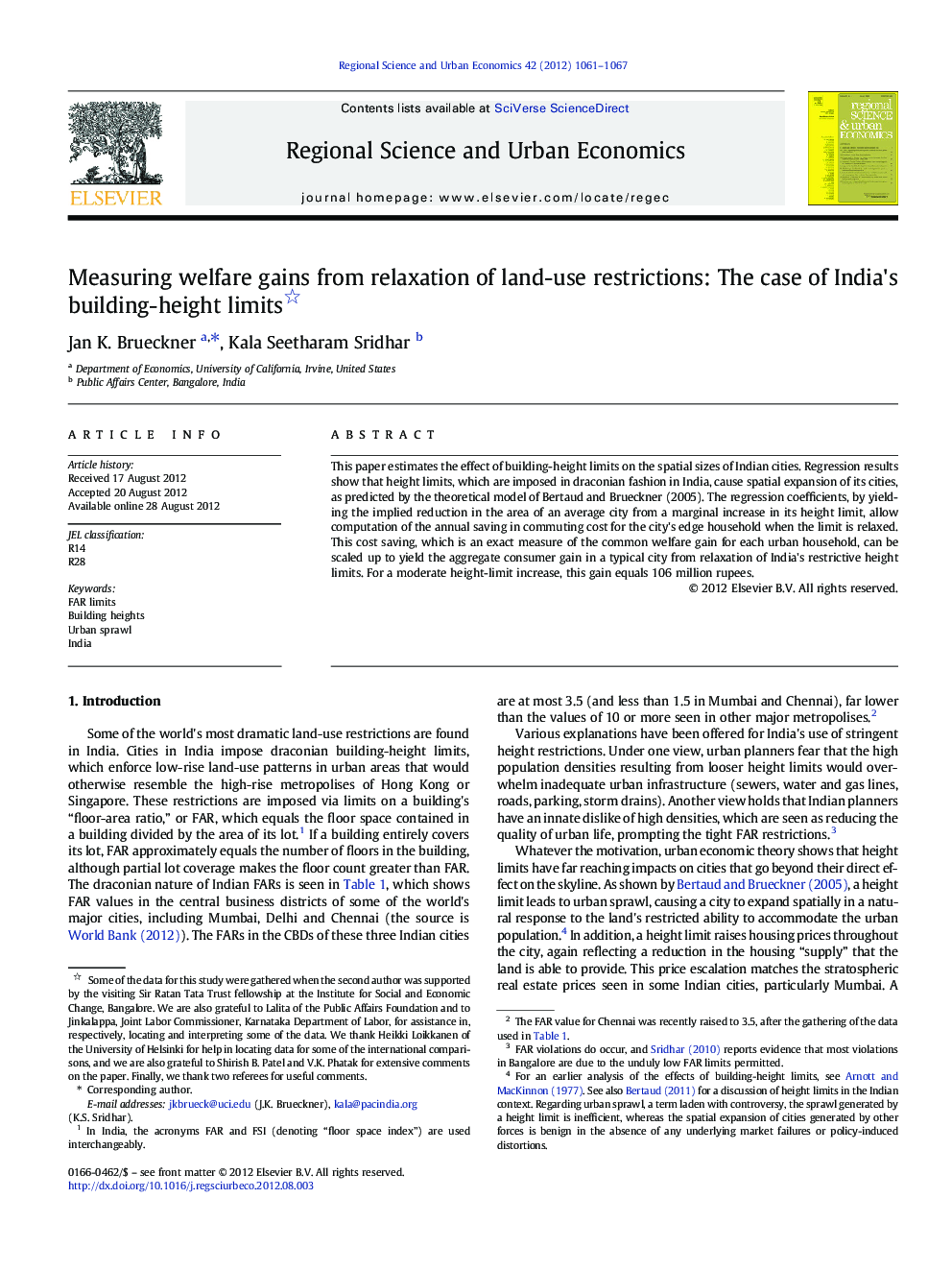| Article ID | Journal | Published Year | Pages | File Type |
|---|---|---|---|---|
| 983830 | Regional Science and Urban Economics | 2012 | 7 Pages |
This paper estimates the effect of building-height limits on the spatial sizes of Indian cities. Regression results show that height limits, which are imposed in draconian fashion in India, cause spatial expansion of its cities, as predicted by the theoretical model of Bertaud and Brueckner (2005). The regression coefficients, by yielding the implied reduction in the area of an average city from a marginal increase in its height limit, allow computation of the annual saving in commuting cost for the city's edge household when the limit is relaxed. This cost saving, which is an exact measure of the common welfare gain for each urban household, can be scaled up to yield the aggregate consumer gain in a typical city from relaxation of India's restrictive height limits. For a moderate height-limit increase, this gain equals 106 million rupees.
► India imposes strict building height (FAR) limits. ► They cause expansion in the spatial areas of cities. ► Welfare loss from FAR limit is measured by increase in edge household's commuting cost. ► Regressing city area on FAR allows the cost saving from looser FAR to be computed. ► Average Indian city gains 106 million Rs., equivalent to a billion US dollars.
